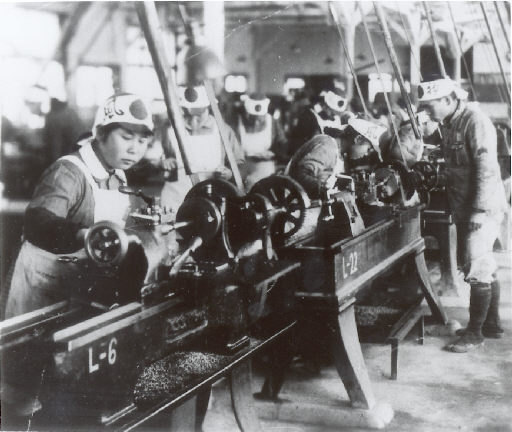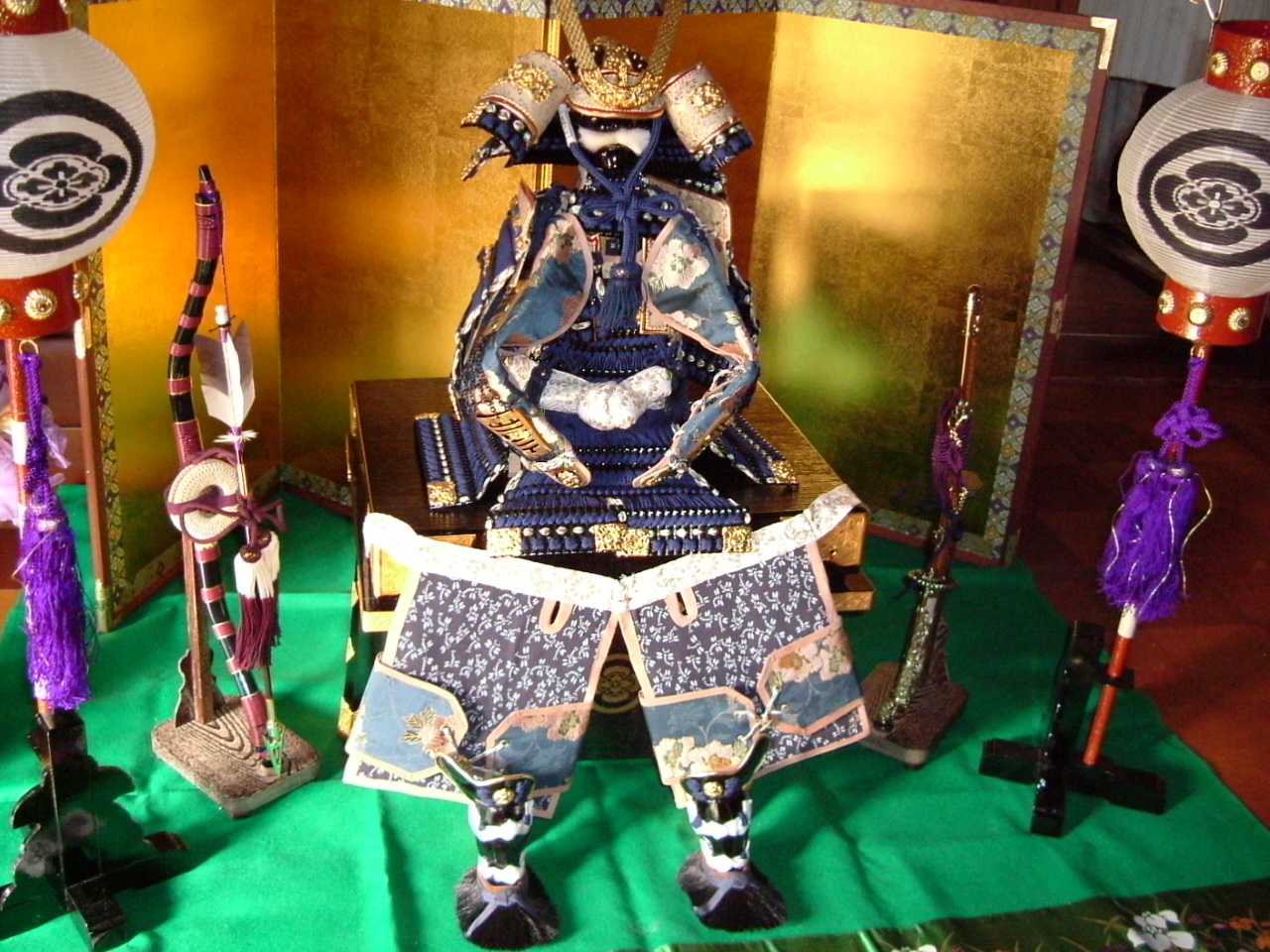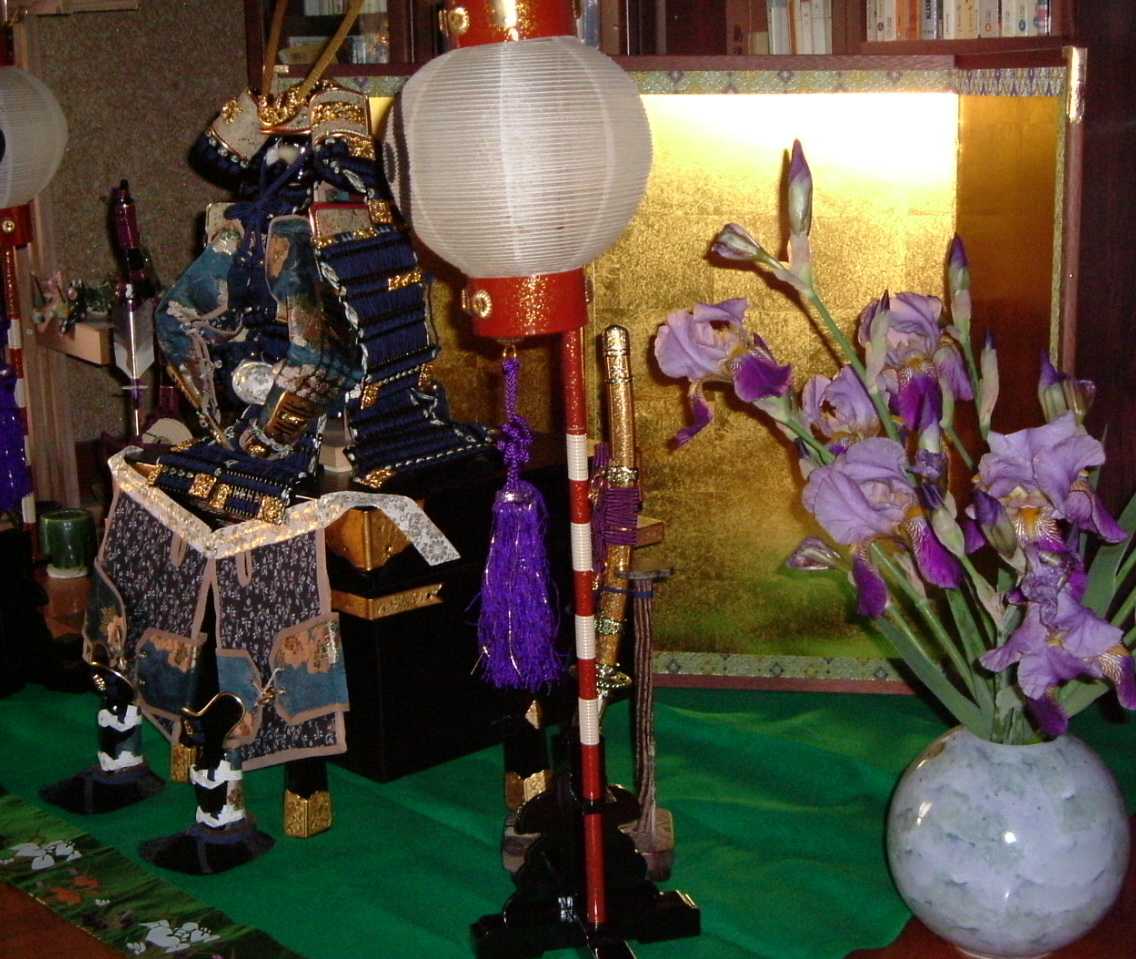Nakajima Aircraft was established by Nakajima Chikuhei in Gunma of Japan in 1917. Nakajima flew test flight in the Tone River at first. Nakajima began to make autos after the Pacific War. Nakajima Chikuhei became a minister of Muitions after surrender of the Pacific War. Nakajima changed its name Fuji. The brand is SUBARU. Sales of autos in Japan decreases now. Fuji announced that it would accept Toyota's capital of 17% share in Apr 2008. By the way, Hasegawa Tatsuo, a chief engineer of Toyota Corolla was an engineer of Tachikawa Aircraft.
Ministry of Munitions
Hasegawa Tatsuo(1916-2008)
- Production of fighters
- Production of engines
- Factory evacuation
- Defense engine plants
- Productivity
| Name | Engine | Nakajima | Mitsubishi | Kawasaki | Kawanishi | Tachikawa | Arsenal | Sum |
| Claude | Kotobuki | - | 782 | - | - | - | 200 | 982 |
| Nate | Ha-12 | 2,007 | - | - | - | 1,379 | - | 3,386 |
| Zero | Sakae | 6,545 | 3,880 | - | - | - | - | 10,425 |
| Oscar | Ha-25 | 3,208 | - | - | - | 2,545 | - | 5,753 |
| Tojo | Ha-41 | 1,227 | - | - | - | - | - | 1,227 |
| Hamp | - | 327 | - | - | - | - | - | 327 |
| Tony | Ha-40 | - | - | 3,159 | - | - | - | 3,159 |
| Frank | Ha-45 | 3,449 | - | - | - | - | - | 3,449 |
| Jack | Kasei | - | 470 | - | - | - | - | 470 |
| Shiden | Ha-45 | - | - | - | 1,000 | - | - | 1,000 |
| Geroge | Ha-45 | - | - | - | 400 | - | - | 400 |
| Production of makers | 16,763 | 5,132 | 3,159 | 1,400 | 3,924 | 200 | 30,578 | |
| Ratio of makers | 54.8 | 16.8 | 10.3 | 4.6 | 12.8 | 0.7 | 100% | |
Aoki p.33
The tables did not conclude seaplane fighters of Kawanishi. The production of Rex(Kyoufu) was 97. And another important fighter was Ki-100 of Kawasaki. The production was 397.
Rex(Kyoufu)
Ki-100
Nakajima bougt manufacturing license of Cyclone R-1820F engine from Wright of US in 1933. Nakajima also bought a lot of casting machines, when a shop foreman went to learn manufacturing engines at Wright.
Ikari p.200
Nakajima made 88% of engines loaded on fighters of Japan. These were Kotobuki(Clade, Nate), Sakae(Oscar, Zero), Ha-109(Tojo), Homare(Frank, Shiden, George). Nakajima won sales of 2,000hp class aircraft engines between competitor Mitsubishi. While Mitsubishi made more than half of bombers engines. Itogawa Hideo was an engineer of Nakajima.
Aoki p.37
Kessaku-ki no tanjyou
Itokawa Hideo
Director of IJA ministry Nagata Tetsuzan thought that IJA air force was old and a demand of ¥200 million budget for aircraft and air defend in 1934 or 1935.
| Year | 1942 | 1943 | 1944 |
| Production | 2,215 | 4,646 | 7,896 |
B-29 tried bombardment at Musashino Factory on 24 November 1944 for the first time. Carriers aircraft of US burned an engine assembly of Nakajima Musashino Factory on 17th Feb 1945, though B-29 tried to destroy it called #357 target. Helldivers and Avengers flew 200km the south east off the Tokyo Bay and raided accurate bombardment. They used rockets too. New York Times told the story and praised USN. B-29 bombed there on 2th, 7th and 12th Apr 1945. At last Musahino Factory stopped the production on 30th Apr 1945.
Kerr, p116-117
Watanabe, p314
Morimoto, p254
I think the raid was easier than charge of running warships suppored AA guns, if escort fighters got the air control. How about flaks of Nakajima Mushashino?
| Date | USA | Japan | Germany |
| 1941Jul | 1.42 | 0.63 | 1.15 |
| 1943Jul | 1.88 | 0.71 | 1.50 |
| 1944Jul | 2.76 | 0.71 | 1.25 |
Hinkoku, p71
98 shiki ku 4 go taini musen denwa-ki
| Date | Type | Equipment |
| 1944 Apr | 52-otsu(A6M5b) | armor glass canopy, fire extinguisher |
| 1944 Sep | 52-hei(A6M5c) | armor behind pilot, inner self-sealed fuel tank |
IJN also fought with I-16 in China, otherwise Fighters of IJN did not equipped armor or self-sealed tank. IJA thought cool that it was diffcult to grow pilots in a short time than IJN. IJN realized armor of fighters in the air battle of Solomons. Zero equipped in 1944 as the table shows. As for bombers, Betty eqipped armor plates and self-sealed tanks in 1943. While B-17 had been already equipped with both in 1941.
Betty
Genda insisted the necessity in his report about Battle of Britain in fall of 1940. Genda p.238
Is it true?
| Name | F4F | F6F-3 | F4U | P-51A | P-51D | A6M2b | A6M5a | J2M2 | N1K2-J | Ki-84 |
| Date | 1939Feb | 1941Jun | 1939Oct | 1940Oct | 1944Apr | 1939Mar | 1943Sep | 1942Feb | 1943Dec | 1943Mar |
| Wing load[kg/m2] | 110 | 182 | 188 | 208 | 251 | 107 | 128 | 160 | 170 | 179 |
| Wing span[m] | 11.58 | 10.23 | 12.49 | 11.29 | 11.29 | 12.0 | 11.0 | 10.8 | 11.99 | 11.3 |
| Designation | Armament | Power[HP] | Weight[kg] | Power/Weight | Year | Production |
| I-16 | 7.6mmx4 | 1,100 | 2,059 | 0.53hp/kg | 1934-42 | 7,000 |
| Yak-7 | 20mmx1 12.7x2 | 1,210 | 3,005 | 0.40hp/kg | 1942 | 6,400 |
| La-5 | 20mmx2 | 1,700 | 3,360 | 0.51hp/kg | 1942-44 | 9,900 |
| Yak-9 | 20mmx1 12.7x2 | 1,360 | 3,082 | 0.44hp/kg | 1943-46 | 3,058 |
| Yak-3 | 20mmx1 12.7x2 | 1,290 | 2,967 | 0.43hp/kg | 1944-45 | 4,797 |
| La-7 | 20mmx3 | 1,850 | 3,240 | 0.57hp/kg | 1944-45 | 7,500 |
| Ki-27 | 7.7mmx2 | 650 | 1,790 | 0.36hp/kg | 1938-41 | 3,386 |
| Ki-43 | 12.7mmx2 | 1,150 | 2,642 | 0.44hp/kg | 1941-44 | 5,751 |
| Ki-44 | 12.7mmx2 7.7x2 | 1,250 | 2,571 | 0.49hp/kg | 1942-44 | 1,200 |
| Ki-84 | 20mmx2 12.7x2 | 1,860 | 3,750 | 0.50hp/kg | 1944-45 | 3,500 |
| Ki-100 | 20mmx2 12.7x2 | 1,350 | 3,495 | 0.38hp/kg | 1945 | 393 |
Soviet p.100 - p.343
Taga
Gunston
Russia and Japan were underdeveloped with aero industry. I-16 showed its performance to other nations in Spanish Civil War and Nomonhan Incident. IJA lost a lot of pilots in Nomonhan. So next to Ki-27, Ki-43 equipped self sealed oil tank and armor behind pilot. Otherwise IJN did not learn as USN learned the Battle of Britain. So Zero had no sealed fuel tank and armor behind pilot till the end of the Pacific War.
Yak-7 fought Bf109F at first. At last La-5 was competitive in Stalingrad. La-7 and Yak-3 overwhelmed enemy in Berlin. Yak-3 was excellent aero dynamic and designed light. La-7 equipped an air cooled engine, ASh-82FN (1,850hp) and could climb 5,000m in 4min 30sec.
Otherwise Japan failed to product the 1,860hp engine designated Ha-45. Ki-100 exchanged liquid cooled to air cooled radial engine, Mitsubishi
Kinsei-62 too late, as LaGG-3 did well.
Syoumou to hoten
| Aircraft | 3.4 |
| Alminum | 5.4 |
| Shipbuilding | 10.9 |
| Steel | 39.0 |
| Oil | 209.1 |
| Tank | 100.0 |
 |
Morimoto, p202-205, p215, p224, p254
Kinrou douin no Ryou
| Date | US | Japan |
| 1941Dec | 1,692 | 2,625 |
| 1943Jan | 3,537 | 3,200 |
| 1944Jan | 11,442 | 4,050 |
| Year | US | UK | Germany | Japan |
| 1941 | 19,433 | 20,094 | 11,766 | 5,088 |
| 1942 | 47,836 | 23,672 | 15,556 | 8,861 |
| 1944 | 96,318 | 26,461 | 39,807 | 28,180 |
IJA airforce
IJA had 1,800 operational aircraft on 15 September 1943. The force was despersed all around the Pacifice, as followed 36 SQ in domestic, 51 SQ in Manchuria, 24 SQ in China, 71 SQ in the Pacific. IJA 7th Wing Group moved to Buto from Ambon in July 1943, which had 250 aircraft. The 7th Wing Group moved to Ambon in November and its aircraft decreased to 150 in December. IJA deployed half of aircraft in China and Manchuria, though Japan had to defend thePacific against 3 folds of US aircraft in 1944.
Inspection tour
President Franklin Delano Roosevelt' wartime tour in September and October 1942. A site shows his inspection of Boeing Aircraft Plant Seattle Washington in WW II
Syowa no jishin
TounakaiJishin.pdf
TounakaiJishinMikawa.pdf
Nagoya-si no bakugeki-kouka
Piston ring
A recent Niigata-jishin ( Niigataken Chuetsu-oki Earthquake in 2007 ) stopped production of autos all over Japan for a few weeks. Because a manufacturing factory of Niigata has supplied simple piston rings for almost of domestic car engines. Why Riken built such a place unconvinent for transport?
2007 Chūetsu offshore earthquake
Successive earthquakes in Tokyo
| Order | Tokyo (Edo) | Kyoto |
| Latest | 1923 | 1662 |
|---|---|---|
| Before | 1855 | 686 |
Great Kantou earthquake damaged 3.7 folds of government budget
Government outcame 10% of budget as restoration expenditure. This occurred curb of arms in 1925.
Morimoto, p286
1923 Great Kantou earthquake
Ansei no Dai-jisin
Edo
| Name | Sales billion $ |
| Yamazaki, jp | 1.82 |
| Trumpf[10], de | 1.75 |
| Gildemeister[9], de | 1.67 |
| Amada, jp | 1.36 |
| Okuma, jp | 1.35 |
| Mori, jp | 1.29 |
| JTECT, jp | 1.24 |
| - | 1.20 |
| 大連機床集団, cn | 1.16 |
| 瀋陽機床集団, cn | 1.20 |
Doku-So Sen(1941Jun22-1945May8)
A college reserves old gear tools of pre War. One of them was made of Maag. Another site shows a chronological list of manufacturing gears in Japan.
Kikai Isan
Nihon Haguruma Kougyou-si
Nowdays
Toshiba was suspected that USN could not trace Soviet silenced submarines because of working propellants by Toshiba's 5-axis machine tool and Swedish NC in the cold war. Although that was not true, the story showed anxiety inferior than machine tool industry of Japan in the cold war. Now, Japan, Germany, China, Italy and Taiwan are nations of machine tools production.
Toshiba Kikai COCOM Ihan Jiken
Japan had been No.1 of machine tool production in the world since 1982. Japan slipped at No.3 in 2009.
-
日本工作機械工業会(日工会)が15日発表した2010年主要国の切削型工作機械生産額調査によると日本の生産額は前年比81・6%増の105億8000万ドルで、ドイツを抜いて2位に浮上した。
世界首位は2年連続で中国だった。中国は同27・0%増の146億8000万ドルで、08年の日本の過去最高額135億4200万ドルを超えた。
世界生産額は同23・9%増の483億9800万ドルと2年ぶりに増加した。日本の世界シェアは同7・0ポイント増の21・9%。首位の中国は同0・7ポイント増の30・3%と続伸。3位のドイツは欧州の経済悪化が響き、生産額が同12・6%減の68億6200万ドル、シェアが同5・9ポイント減の14・2%になった。また韓国、台湾がイタリアを抜いて5強に食い込んだ。アジア勢が需要国だけではなく、生産国としても台頭している。
米調査会社ガードナーの調べによれば、2009年の切削型工作機械の生産額で、日本の世界シェアは約15%となり28%の中国、20%のドイツに抜かれ、82年以降27年続いていた首位の座を明け渡し3位に転落した。日本の同機械の09年生産額は前年比56.5%減の58.9億ドル(約5300億円)と、同35.2%減(78.2億ドル)のドイツと比べ下落幅が大きい。初の首位となった中国は、同8.9%増の109.5億ドルだった。 要因のひとつとして、日本工作機械工業会の中村健一会長は「グローバリゼーションの反動」を挙げる。日本の工作機械業界の主要顧客である日系製造業は、トヨタ自動車 <7203> やコマツ <6301> をはじめ海外市場の強化戦略をとってきた。工作機械メーカーも08年までその恩恵を大きく受けてきたが、景気後退で極端な需要減少に直面。「リーマン・ショック後に円高が進んだことも痛手」(中村会長)となった。輸出比率の高さから、景況感の悪化だけではなく為替影響による競争環境の悪化ものし掛かった。こうした事情が、主力市場をユーロ圏内に持つ欧州メーカーと比べ、シェア後退が顕著となったことの背景にあるという。 牧野フライス製作所 <6135> の牧野二郎社長も、「中国市場などでは実際、欧州メーカーが勢力を伸ばすなど、日本メーカーは苦戦している」と話す。ユーロ安を背景に、欧州メーカーは現地自動車メーカーなどの需要獲得を有利に進めている状況。牧野社長は「中国以外の新興国でも同じようなことが言える」と警戒感を強めている。 一方、中国の生産額が世界首位となったことに対する不安の声は小さい。「中国メーカーは技術的に日本と競合する域にまだ達していない」(中村会長)ことから、当面は大きな脅威にはならないとする見方があるためだ。浜井産業 <6131> の武藤公志会長は「世界需要が回復しても、日本は数の上ではもう中国に追いつけないだろう」と指摘し、「今後は、欧州メーカーと新興国市場でいかに争っていけるかが重要となる」としている。(鈴木草太) 提供:モーニングスター社
[2] Morimoto, p205, p215
[3] Ki-45 kai
[4] Kinrou douin-rei
[5] Handa Seisakusyo
[6] ルネサス工場被災 車業界が全面支援
[7] Gleason
[8] Maag
[9] Gildemeister
[10] TRUMPF
 |  |
| Children's Day | Flower Ayame |
[1] Nomonhan Jiken Senbotsu-sha su
© 2007-2011 Enoki Sensor All Rights Reserved